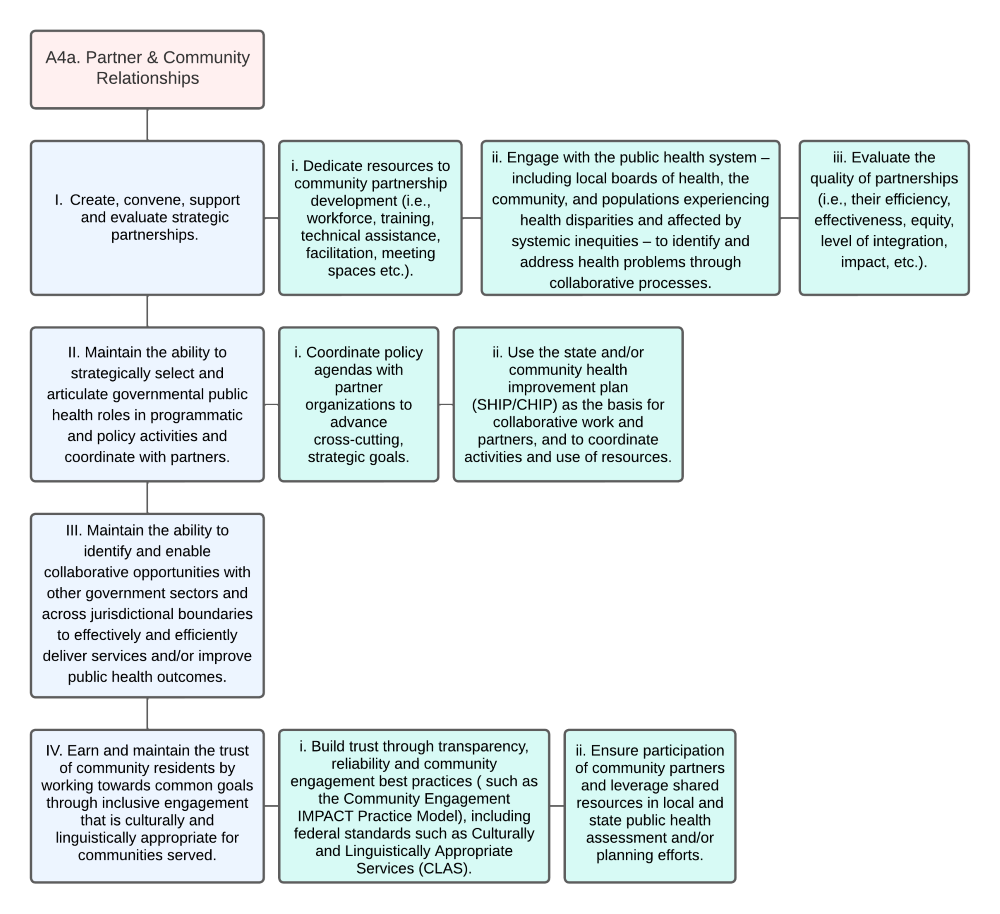A4. Partnerships

Partnerships: Colorado’s governmental public health system will create, convene, and support strategic partnerships, engage community members and cross-sectoral partners, agencies, and organizations to achieve public health goals.
Link:
The source Core Public Health Services Operational Definitions Manual 2019 is organized as follows:
|
Functions of Partnerships
A4a. Partner and Community Relationships
I. Create, convene, support and evaluate strategic partnerships.
i. Dedicate resources to community partnership development (i.e., workforce, training, technical assistance, facilitation, meeting spaces etc.).
ii. Engage with the public health system – including local boards of health, the community, and populations experiencing health disparities and affected by systemic inequities – to identify and address health problems through collaborative processes.
iii. Evaluate the quality of partnerships (i.e., their efficiency, effectiveness, equity, level of integration, impact, etc.).
II. Maintain the ability to strategically select and articulate governmental public health roles in programmatic and policy activities and coordinate with partners.
i. Coordinate policy agendas with partner organizations to advance cross-cutting, strategic goals.
ii. Use the state and/or community health improvement plan (SHIP/CHIP) as the basis for collaborative work and partners, and to coordinate activities and use of resources.
III. Maintain the ability to identify and enable collaborative opportunities with other government sectors and across jurisdictional boundaries to effectively and efficiently deliver services and/or improve public health outcomes.
IV. Earn and maintain the trust of community residents by working towards common goals through inclusive engagement that is culturally and linguistically appropriate for communities served.
i. Build trust through transparency, reliability and community engagement best practices ( such as the Community Engagement IMPACT Practice Model), including federal standards such as Culturally and Linguistically Appropriate Services (CLAS).
ii. Ensure participation of community partners and leverage shared resources in local and state public health assessment and/or planning efforts.
